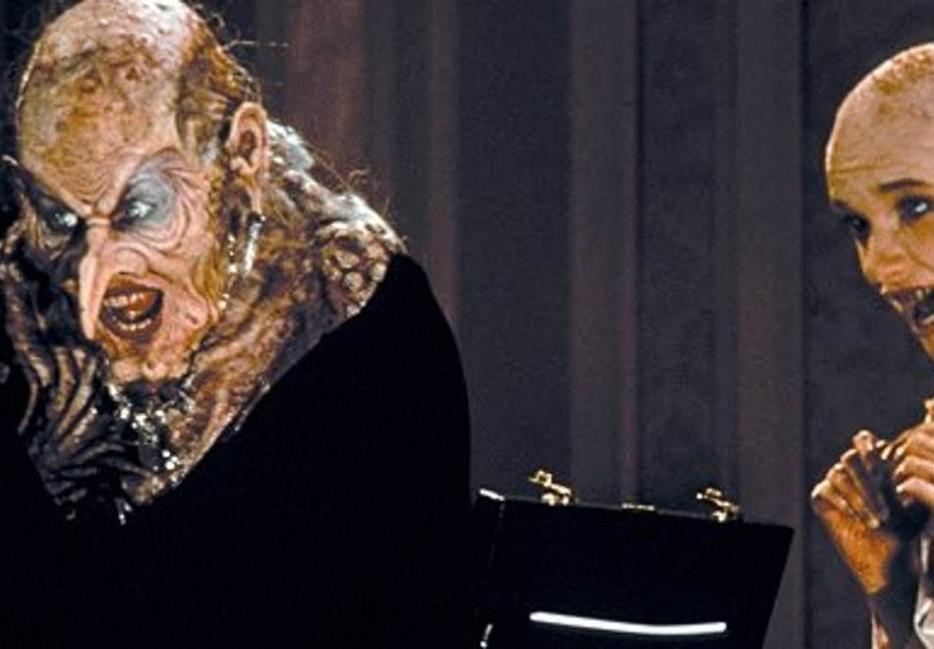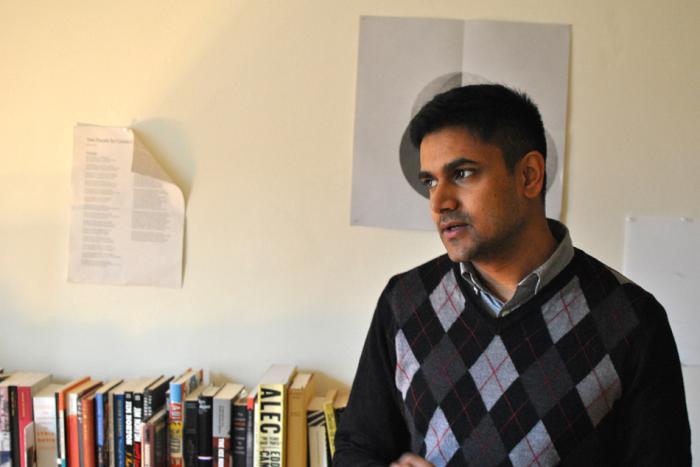I was six when I was introduced to Roald Dahl’s The Witches. My older sister would read the creepiest parts out loud to my brother and me as we sat around the bed. Published in 1983, some 13 years before Harry Potter stepped foot in Hogwarts, the witches of The Witches were actually evil. They wanted to rid the world of children. Their eyes were red and their spit was blue. Once a little Norwegian girl named Solveg disappeared, only to reappear in a painting in her parent’s living room. The culprit? Ogres. (Just kidding. It was witches.)
The ending is not quite happy—the boy protagonist lives, but he is turned into a rat. If there’s a moral, it didn’t stick with me (don’t trust bald women?). The Witches terrified me. I wasn’t be able to sleep at night for fear that I’d wake up trapped for all eternity in the commemorative Beatrix Potter plate affixed to the wall. Naturally, the solution was to sneak into my sister’s bedroom, steal the book, and keep reading under the covers. Once I had finished, I would flip back to the first page and start again.
Playing around with the macabre is risky, especially when it comes to children’s literature. Writing for a young audience affords certain freedoms: kids aren’t jaded by tired tropes, so you’d think that their minds would be easier to blow than those of grownups with Netflix accounts. But there are other challenges: kids won’t fake their way through a book because it was nominated for the Giller, and kids have parents, who will often monitor what they read for “inappropriateness.” This means that children’s book authors are tasked with entertaining short attention spans while appealing to parents—chilling the bones without raising eyebrows. Dahl was a master of the genre; with his densely layered stories that moved like roller coaster rides, he made it look easy.
(EVIDENCE FROM THE FIELD: I work in a children’s bookstore, and trying to sell books to conservative adults is an endeavour. Grannies tend to go for books about talking bunnies and their adventures, ten-year-olds gravitate to something called Fart Powder, but everybody is down with Roald Dahl.)
Out of all of Roald Dahl’s major children’s books, The Witches left the biggest dent on my impressionable first-grade self, but that doesn’t mean his other stories were less disturbing. There was The BFG, with its giants named “Fleshlumpeater” and “Manhugger.” There was The Twits, about a nasty, mean couple that played cruel pranks on each other, abused monkeys, and ended up shrinking to death in the final scene. Most are familiar with Dahl’s most famous work, Charlie and the Chocolate Factory, that delightful tale of candy and whimsy that sees a ten-year-old girl TURNED INTO A GIANT BLUEBERRY and then juiced back into a forever-tinted version of her former self.
To call Dahl eccentric would be a rash oversimplification. This was a man who kept bits of his spine in a jar on his desk, and who wrote stories for grownups that bordered on the sadomasochistic. His personal life was tumultuous, his marriages fraught, and his political beliefs downright anti-Semitic. Yet his books provided adult-sized thrills for the innocent, depicting the ugliness the world contains through the eyes of a kid. They confirmed children’s suspicions: grownups are almost always useless, ugly people are evil, and, as the BFG can attest, fart jokes are hilarious. But they offered rewards along the way: unlimited candy, adventures across the ocean while riding a giant peach, sly jokes at the expense of parents and other authority figures. Dahl made a pinky swear that he was on his young reader’s side.
The spiritual successor to Dahl’s macabre world is probably the work of Lemony Snicket, the pen name of Daniel Handler, whose Series of Unfortunate Events follows three orphaned siblings as they outsmart the evil Count Olaf, a distant relative intent on killing them and taking their fortune. Like Dahl, Handler—who has written a number of books under his real name, and contributes a column to The Believer—is a sharp and witty writer, though not all that peculiar. His alter ego, however, is a character from the world he narrates, a shadowy figure who is written indirectly into the plot. Snicket, with some success, mimics Dahl’s style, refusing to talk down to his readers. He trusts that his young audience can handle scary stories told in a wry, sophisticated manner—and, fittingly, fills his books with protagonists who are smart beyond their years. (Snicket’s fictional universe continues with All the Wrong Questions, a prequel series that released its second installment last month.)
Last year, Jowita Bydlowska argued on this site that picture books tackling macabre subjects can reify uncomfortable concepts that are familiar yet elusive to children—death, punishment, justice. As someone who owns more picture books than any childless 20-something should, I like these stories, but their simplicity only leaves room for so much: few characters, singular plotlines. Middle grade books—that is, chapter books that serve as a transition between picture books for younger children and angsty, young adult fiction for teens—allow for weirdness and whimsy through longer narratives. There’s no shortage of terrifying books in this range: last year saw the release of John Boyne’s The Terrible Thing That Happened To Barnaby Brocket, about a boy born with the ability to float. His parents, wanting a life of conformity and hating anything abnormal, cut off the weights that keep him grounded and let him float off around the world. In Claire LeGrand’s creepy The Cavendish Home for Boys and Girls, a mysterious orphanage kidnaps misfit children. Neil Gaiman and Holly Black, two veterans of the genre, both published new kids books this year.
These titles depict warped universes that would give Tim Burton a happy aneurysm. Certain tropes reappear: the characters inhabit an uncanny world that mirrors ours in appearance but in which everything is slightly askew. Readers’ wishes for independence are fulfilled then warped, as adults are usually absent or useless. And while the stories might be larger than life, they aren’t, for the most part, so fantastical that their absurdities and horrors couldn’t happen. (See: the very real Inman twins, who grew up with immeasurable wealth and a horrendously abusive father. Want to take your eccentricities from fairy tale quirky to real world horrifying? Just add drugs!)
What the books don’t contain are overarching, digestible lessons. That the books never feel didactic is part of their power: they’re written for the inherent joy of reading, and serve as proof that a story can be both well written and entertaining. As a kid, reading about Dahl’s witches never felt like homework the way other books did. They were an illicit pleasure, contraband supplied by my sister, cigarettes with literary merit. (I never did quite figure out smoking.)
Unlike picture books, these aren’t morality tales; their creepiness is more aesthetic than thematic. Not that there aren’t lessons to be learned in them. Smart writers produce layered prose, often with subtext about the merits of being well read, or the power of imagination; they capture many of the unsavoury and uncomfortable truths about being in the world. Dahl, Snicket, and their ilk help their audience become more sophisticated readers. (Call it goth-lite, earnest and not yet tainted by Hot Topic and shitty music.) Kids can handle their literary nightmare fuel—my sister is still mad at me for crumpling her copy of The Witches by hiding it under my pillow—they may just need to sleep with the lights on after.





